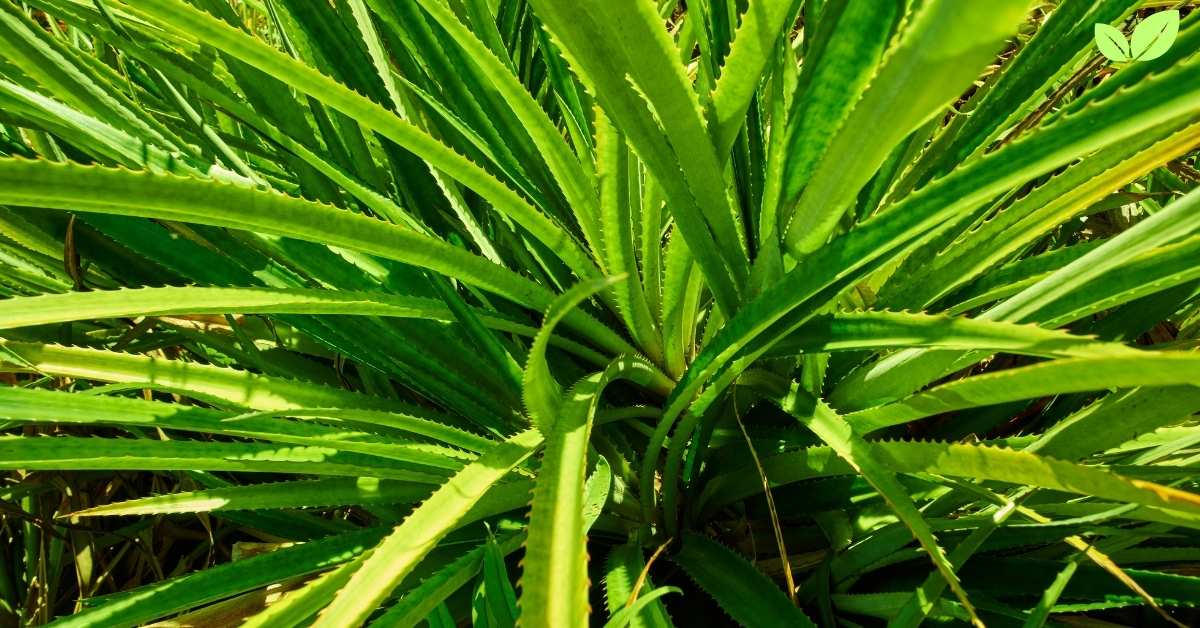Pandanus veitchii, a striking member of the Pandanaceae family, is a tropical plant known for its unique spiral arrangement of long, green leaves with white edges and its distinctive growth form. Also known as screw pine (though it’s not a true pine), this ornamental plant is native to the tropical regions of Southeast Asia, Madagascar, and the Pacific islands, where it plays a crucial role in coastal and forest ecosystems. Pandanus veitchii provides food, shelter, and stabilization for soil in its native habitat, making it an essential species for ecological balance and biodiversity.
This article explores the environmental niche of Pandanus veitchii, covering its adaptations, role in tropical ecosystems, interactions with other species, and the environmental challenges it faces. By understanding its unique characteristics and ecological contributions, we gain a deeper appreciation for Pandanus veitchii’s importance in maintaining healthy tropical landscapes.
Overview of Pandanus Veitchii: Characteristics and Habitat
Pandanus veitchii is admired for its beautiful foliage and resilience, which make it popular in both natural and cultivated landscapes. With its spiky, rosette-shaped leaves and compact growth form, this tropical plant adds visual interest and ecological value to coastal areas, forests, and home gardens alike.
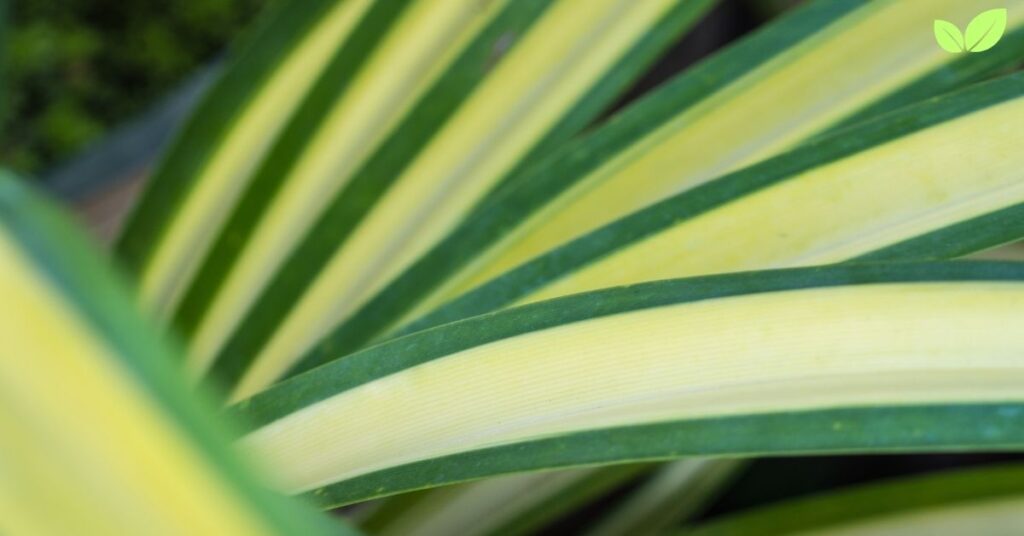
1. Physical Characteristics
Pandanus veitchii is a small to medium-sized shrub that can grow up to 10 feet tall, although it may remain smaller in cultivated settings. Its leaves are long, narrow, and pointed, growing in a spiral pattern around the trunk. The leaves have distinct white or cream-colored edges, creating an attractive contrast with the rich green color of the leaf interior. As the plant grows, older leaves at the base die back, forming a fibrous, trunk-like structure.
One of the defining features of Veitch’s Screw-pine is its stilt or prop roots, which grow from the trunk and provide stability. These roots help anchor the plant in loose, sandy soil, enabling it to withstand strong coastal winds, shifting sands, and even occasional flooding. The plant also produces small, round fruits that provide food for various animals in its natural habitat.
2. Native Habitat and Distribution
Pandanus veitchii is native to tropical and subtropical regions, including Southeast Asia, Madagascar, and the Pacific islands. In these areas, it grows naturally in coastal habitats, where it thrives in sandy, nutrient-poor soil and endures harsh environmental conditions. Coastal dunes, sandy forests, and mangrove edges are common habitats for Pandanus veitchii, where it benefits from the ample sunlight and high humidity typical of these regions.
This species has also been introduced to other tropical and subtropical regions worldwide, where it is often grown as an ornamental plant due to its unique appearance and resilience. However, in its native habitats, Pandanus veitchii is an essential part of the ecosystem, contributing to soil stabilization, habitat structure, and biodiversity.
Adaptations of Pandanus Veitchii to Its Environment
Pandanus veitchii possesses several adaptations that enable it to thrive in challenging coastal environments. These adaptations help it withstand intense sunlight, salt exposure, nutrient-poor soils, and occasional water shortages, making it well-suited to its tropical habitat.
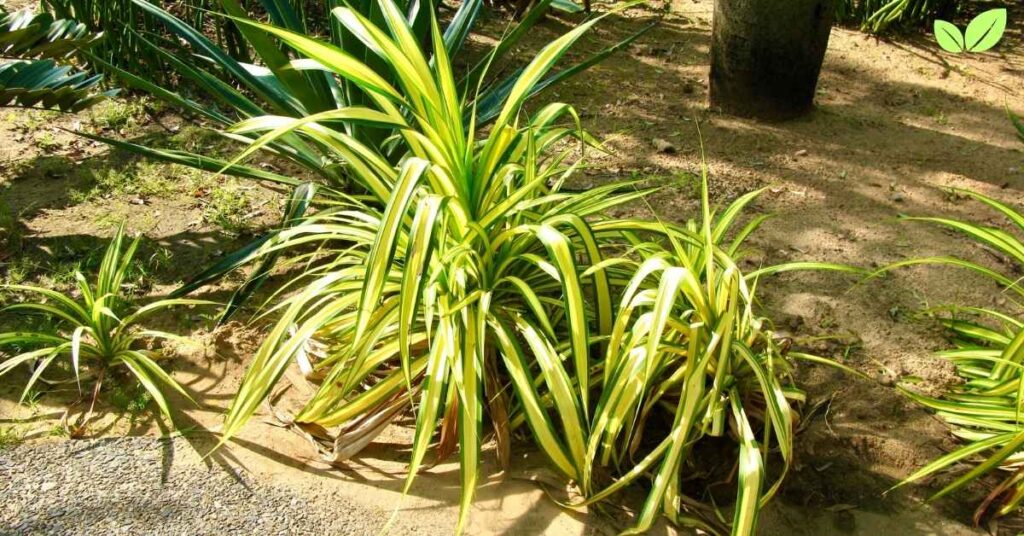
1. Prop Roots for Stability and Support
One of the most distinctive adaptations of Pandanus veitchii is its stilt or prop roots, which grow from the lower part of the trunk and spread out around the base of the plant. These roots provide stability in loose, sandy soil, anchoring the plant against coastal winds and preventing it from being uprooted by storms or shifting sands.
Prop roots also help the plant absorb nutrients from the soil, increasing its stability and nutrient intake. This adaptation is particularly useful in coastal habitats, where soils are often nutrient-poor and subject to erosion. The support provided by the prop roots allows Pandanus veitchii to establish itself in habitats where other plants might struggle to survive.
2. Salt Tolerance and Water Conservation
Pandanus veitchii is highly tolerant of salt, making it well-suited to coastal areas where salt spray and saline soils are common. Its leaves have a waxy cuticle that minimizes water loss and protects against salt damage. This adaptation allows the plant to thrive in areas with high levels of salt exposure, which would be inhospitable for many other species.
In addition to its salt tolerance, Pandanus veitchii is adapted to conserve water. Its leaves have a tough, fibrous texture and a waxy coating that reduces evaporation, allowing it to survive in environments with limited freshwater availability. These water-conserving adaptations enable the plant to endure dry spells, which are common in coastal regions with fluctuating rainfall.
3. Spiral Leaf Arrangement for Sunlight Efficiency
The spiral arrangement of leaves around the trunk allows Pandanus veitchii to maximize sunlight exposure, a valuable adaptation in coastal areas where sunlight can be intense. By growing in a spiral, each leaf receives optimal sunlight without shading the leaves below it, allowing the plant to photosynthesize efficiently.
This leaf arrangement also helps the plant capture rainwater, directing it toward the base of the plant where it can be absorbed by the roots. This efficiency in capturing light and water supports the growth of Pandanus veitchii in nutrient-limited environments, contributing to its resilience and adaptability.
Ecological Roles and Contributions of Pandanus Veitchii
Pandanus veitchii plays essential roles in its ecosystem, supporting biodiversity, stabilizing soil, and contributing to nutrient cycling. Its presence in coastal and tropical environments enhances the health and stability of these ecosystems, making it a valuable species for ecosystem balance.
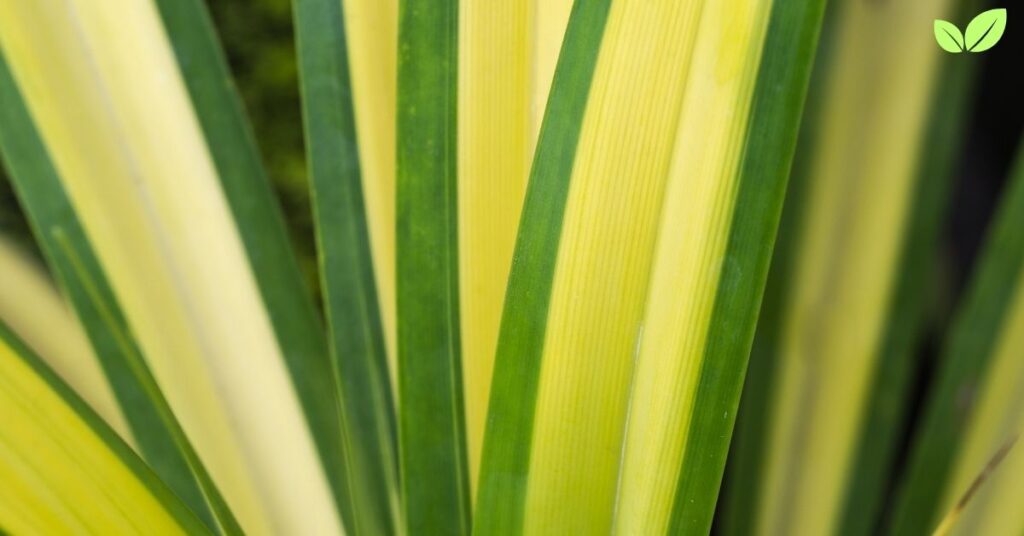
1. Soil Stabilization and Erosion Control
Pandanus veitchii’s extensive root system plays a crucial role in stabilizing soil, especially in coastal and sandy areas where erosion is a significant concern. The plant’s prop roots help anchor loose soil, reducing the risk of erosion from wind and water. By holding the soil in place, Veitch’s Screw-pine helps protect coastlines from erosion, which benefits nearby plant and animal communities.
In addition to stabilizing soil, Veitch’s Screw-pine contributes to dune formation by trapping sand around its roots and stems. This process gradually builds up dunes and other coastal structures, creating habitats for a variety of species. The role of Pandanus veitchii in soil stabilization and erosion control is critical in maintaining the integrity of coastal landscapes, particularly in regions vulnerable to erosion and sea level rise.
2. Habitat and Shelter for Wildlife
Pandanus veitchii provides valuable habitat and shelter for a wide range of species. Its dense foliage offers cover from predators, while the plant’s prop roots create sheltered spaces that provide refuge for small animals, insects, and crustaceans. Coastal birds, small reptiles, and various invertebrates benefit from the shelter and nesting sites offered by Pandanus veitchii.
The plant’s fruits also provide a food source for wildlife, including birds and small mammals, which help disperse its seeds. In some regions, Pandanus veitchii forms dense thickets that support diverse communities of species, contributing to biodiversity and promoting ecological balance in coastal habitats.
3. Nutrient Cycling and Soil Enrichment
Although coastal soils are often low in nutrients, Veitch’s Screw-pine contributes to soil enrichment through the decomposition of its leaves and other plant material. As leaves and organic matter accumulate around the plant, they decompose, releasing nutrients into the soil. This nutrient cycling process benefits nearby plants and helps support a productive ecosystem, even in areas with naturally poor soil fertility.
The organic matter from Veitch’s Screw-pine also improves soil structure, enhancing water retention and providing a substrate for beneficial microorganisms. This process contributes to the long-term health of coastal soils, supporting plant growth and promoting the establishment of other species in the area.
Interactions of Pandanus Veitchii with Other Species
Pandanus veitchii interacts with various species within its ecosystem, forming relationships that contribute to ecological balance and biodiversity. These interactions include mutualistic relationships with seed dispersers, competitive interactions with other coastal plants, and support for a range of wildlife species.
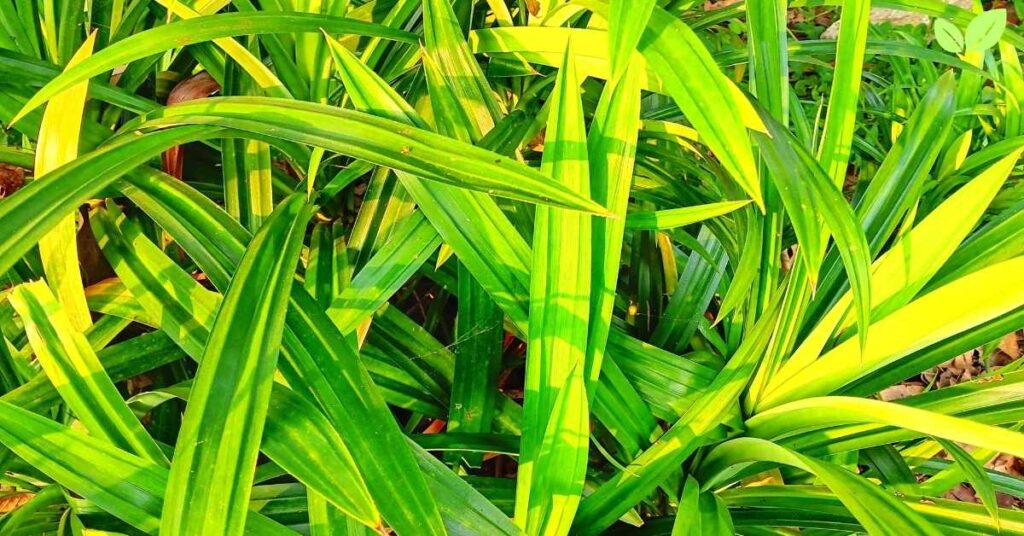
1. Mutualistic Relationships with Seed Dispersers
Pandanus veitchii relies on animals to disperse its seeds, facilitating the plant’s reproduction and spread. Birds and small mammals are attracted to the plant’s fruits, which provide a source of food. As these animals consume the fruits, they help disperse the seeds to new locations, allowing Pandanus veitchii to establish new populations in suitable habitats.
This mutualistic relationship benefits both the plant and the seed-dispersing animals, as the animals receive nourishment from the fruits while helping the plant reproduce. By contributing to seed dispersal, Veitch’s Screw-pine supports biodiversity and promotes genetic diversity within its own population.
2. Competition with Other Coastal Vegetation
Pandanus veitchii competes with other coastal plants for resources such as sunlight, water, and nutrients. Its ability to grow in poor soils and tolerate salt gives it an advantage in coastal environments, where few plants can thrive. This resilience allows Pandanus veitchii to establish itself in areas with limited competition, particularly along coastal dunes and sandy soils.
While Pandanus veitchii can sometimes dominate in certain habitats, its presence often contributes to habitat complexity and supports diverse plant communities. In coastal ecosystems, its interactions with other vegetation create a mosaic of plant species that provide various ecological functions, from soil stabilization to wildlife habitat.
3. Supporting Insect and Pollinator Populations
The flowers of Veitch’s Screw-pine attract pollinators, including bees and other insects, which are essential for the plant’s reproduction. By providing nectar and pollen, Pandanus veitchii supports pollinator populations, which play a critical role in maintaining the health of coastal ecosystems. The presence of pollinators also benefits other plant species in the area, enhancing biodiversity and supporting the reproduction of various plants.
In addition to supporting pollinators, Pandanus veitchii provides habitat for a range of insect species that contribute to the ecosystem’s food web. These insects attract insectivorous birds and other animals, creating a balanced ecological community where species interactions support the health and stability of the habitat.
Conservation Challenges and Environmental Threats to Pandanus Veitchii
Despite its adaptability, Veitch’s Screw-pine faces several conservation challenges, including habitat loss, climate change, and the introduction of invasive species. These threats impact the plant’s populations and the ecosystems that rely on its presence.
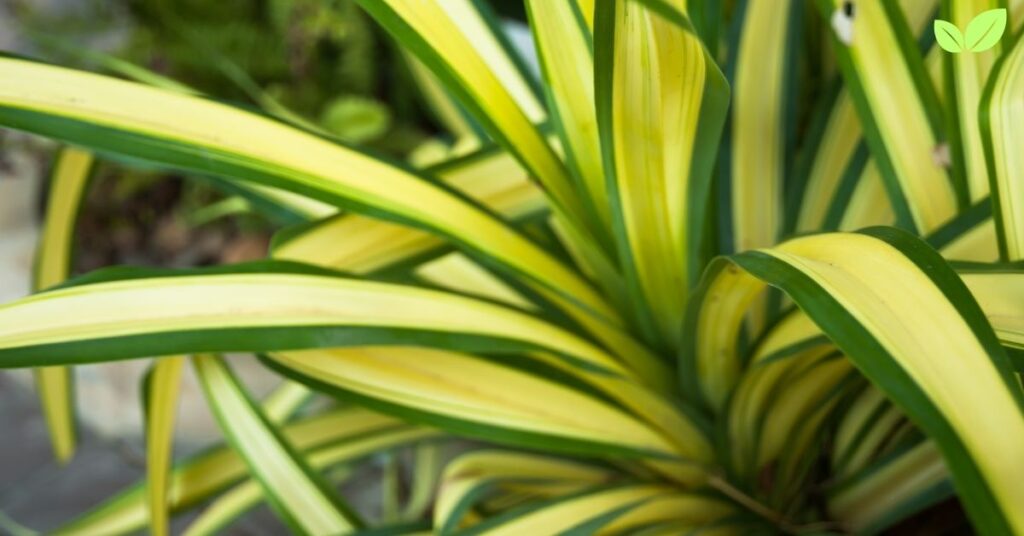
1. Habitat Loss Due to Coastal Development
One of the most significant threats to Pandanus veitchii is habitat loss resulting from coastal development. As coastal areas are developed for tourism, agriculture, and urban expansion, the natural habitats of Veitch’s Screw-pine are often destroyed or fragmented. This habitat loss reduces the availability of suitable environments for the plant, limiting its ability to establish and maintain healthy populations.
Conservation efforts focused on protecting coastal habitats are essential for preserving Pandanus veitchii and the ecological benefits it provides. By protecting coastal dunes, mangroves, and sandy forests, we can support the health of these ecosystems and maintain the plant’s role in stabilizing soil, supporting wildlife, and enhancing biodiversity.
2. Impact of Climate Change
Climate change poses a significant threat to Pandanus veitchii and its coastal habitats. Rising sea levels, increased storm intensity, and shifting temperature patterns can impact the plant’s growth, reproduction, and habitat availability. Coastal erosion, driven by sea level rise and stronger storms, may lead to the loss of critical habitats for Pandanus veitchii.
In response to climate change, conservation practices that promote ecosystem resilience and protect coastal landscapes are essential. By restoring degraded habitats and protecting vulnerable coastlines, we can help Veitch’s Screw-pine and other coastal species adapt to changing environmental conditions.
3. Competition with Invasive Species
In some regions, Pandanus veitchii faces competition from invasive plant species that can outcompete it for resources. Invasive species can alter the structure and composition of coastal ecosystems, reducing the availability of nutrients and habitat for native species. Managing invasive species and promoting native vegetation are essential for supporting healthy populations of Pandanus veitchii and maintaining ecosystem stability.
Efforts to monitor and control invasive species in coastal habitats can help protect Pandanus veitchii and the ecosystems it supports. By preserving native plant communities, we contribute to the resilience and biodiversity of coastal environments.
Conclusion
Pandanus veitchii, with its distinctive spiral leaves, prop roots, and salt tolerance, is an essential component of coastal ecosystems. Its roles in stabilizing soil, supporting biodiversity, and promoting nutrient cycling make it a valuable species in tropical and subtropical regions. By providing habitat, food, and shelter, Pandanus veitchii enhances the health and resilience of coastal landscapes, supporting a diverse array of plant and animal species.
Despite its adaptability, Pandanus veitchii faces conservation challenges, including habitat loss, climate change, and competition with invasive species. Protecting its natural habitats, promoting conservation practices, and supporting resilient coastal ecosystems are crucial for ensuring the survival of Pandanus veitchii and the ecological benefits it provides. By understanding and preserving Pandanus veitchii, we contribute to the health and stability of coastal environments that are vital for both wildlife and human communities.
FAQs
1. What makes Pandanus veitchii important in coastal ecosystems?
Pandanus veitchii stabilizes soil, supports biodiversity, and provides habitat and food for wildlife, making it crucial for coastal ecosystem health.
2. Where is Pandanus veitchii naturally found?
It is native to tropical and subtropical regions, including Southeast Asia, Madagascar, and the Pacific islands, thriving in coastal and sandy habitats.
3. How does Pandanus veitchii tolerate salt exposure?
Its waxy leaves and salt-tolerant roots allow it to withstand coastal salt spray, enabling it to grow in saline soils and salt-laden air.
4. What threats does Pandanus veitchii face?
Threats include habitat loss due to coastal development, climate change impacts like sea level rise, and competition with invasive species.
5. How does Pandanus veitchii contribute to soil health?
Its prop roots stabilize sandy soils, reducing erosion, while decomposing plant material enriches soil nutrients and supports ecosystem productivity.
6. How can we help conserve Pandanus veitchii?
Protecting coastal habitats, managing invasive species, and supporting climate resilience practices are key to conserving Pandanus veitchii populations.
Read More: Thuja Occidentalis: Exploring Its Environmental Niche and Ecological Importance

